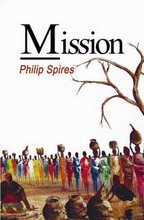Stars shine brightly and that shining can cover immense distances. Their light travels in straight lines, unless there is, as Einstein described, another immense mass nearby – perhaps another star, and then it curves. The star of Saint-Saens’s Symphony No. 3 is the organ. It is even known as the Organ Symphony, despite the fact that the organ is silent for most of the work’s duration, and the fact that the organ part is largely written to enhance the power of the orchestral tutti. It does come to the fore briefly in the slow movement, but, if it is then a star, it burns out quite quickly. Precisely why the composer also included a piano in the orchestration still baffles me, because the piano’s contribution could so easily have been achieved differently, for instance, by pizzicato in the strings.
And it’s not that this star had to shine from afar. The ADDA auditorium does not have an organ, and, occasionally, when an organ was obligato for a given piece, an electric variety was shipped in. But these were Baroque pieces with organ continuo, with none of the blazing fortés that the Saint--Saens demanded.
It is about a kilometre from the ADDA auditorium to Alicante Cathedral and it was that church’s organ which was played by Daniel Oyarzabal and relayed live in projection on the back wall of the stage. The technical feat in accomplishing this was huge. And it was a resounding success, although I did detect a slight delay in the organ part, not because of the playing, obviously, but because of the inherent latency of the electronics. The speed of light is immense, but a delay of just the smallest fraction of a second alongside tutti at near presto tempo is discernible.
Not that this shortcoming affected the quality of the performance, which was truly wonderful. Personally, I prefer the first movement punchier, but this more romantic reading made perfect and lyrical sense. It was an immense achievement for all concerned, not least for the ADDA orchestra, who had a quite superb evening.
Speaking of brilliance being a little curved when another massive source is nearby, the evening began with a beautifully played Don Quixote of Richard Strauss. Amanda Forsyth’s cello played the delusional but lovable Quixote and her husband, Pinchas Zuckerman, chipped in on the witty viola as Sancho Panza. Not only were the orchestral textures exquisite, but the storytelling came to the fore in this performance via Josep Vicent’s reading. The orchestral detail achieved by this combination of conductor and orchestra was at times breathtaking, most of all in the slower, quieter passages where the composer juxtaposed widely varied sonorities. There is perhaps not enough of a role for the viola to regard it as a soloist’s spot, but Amanda Forsyth’s cello shone out when alone and played along with the orchestral part when not otherwise engaged.
What was utterly clear in this concert was that the
players who comprise the ADDA orchestra love both the music and its challenges,
and they adore playing together. The sense of camaraderie and cooperation is
palpable, and this shines through anything they touch to enhance the audience’s
musical experience. This is surely now one of the great orchestras, a true star.




